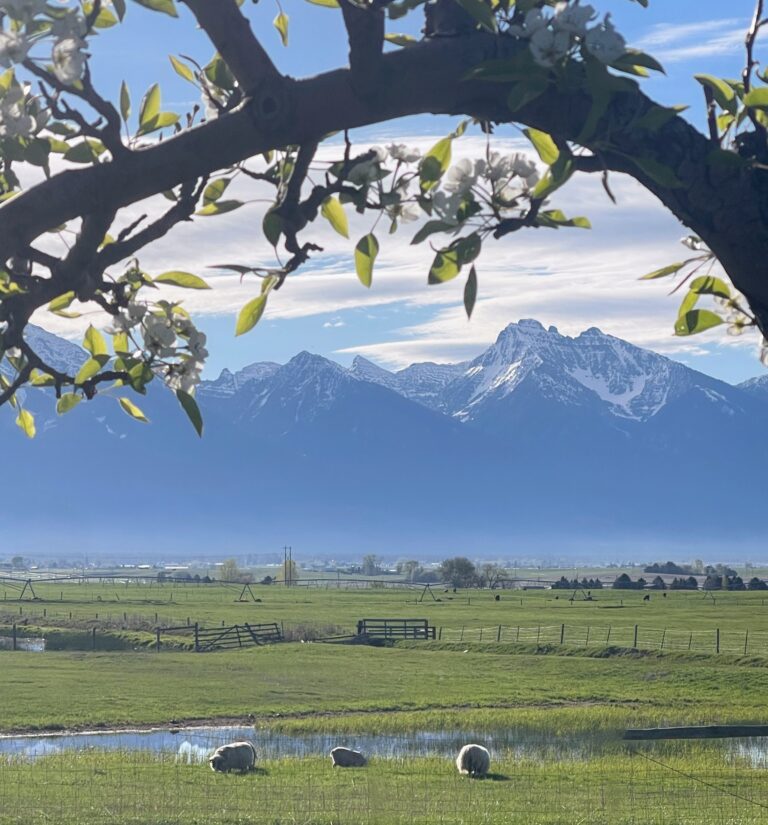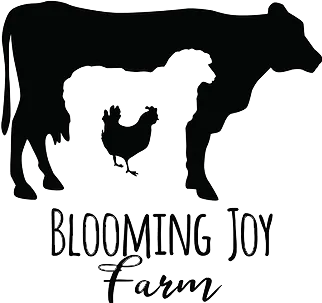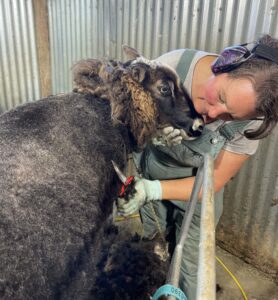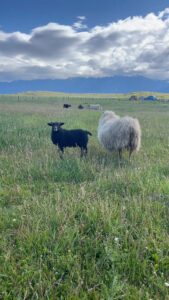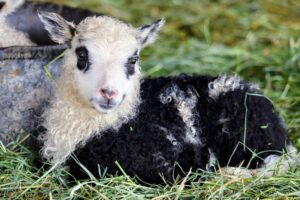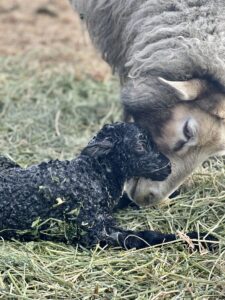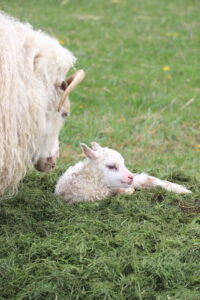Sheep in the Sun – Caring for Icelandics in the Heat
While Icelandic sheep thrive in snowy pastures and bracing winds, they also live under the same summer sun as the rest of us. As a northern breed developed in cool climates, they carry a heavy dual-coated fleece that serves them well in winter—but can be a challenge in the heat of July. Here on our Montana farm, we’ve learned how to help our Icelandic flock stay comfortable and healthy through the warmest months of the year.
Icelandic sheep are known for their distinctive dual-coated fleece: a long outer layer called tog and a soft, insulating undercoat called thel. While this combination is perfect for Iceland’s unpredictable weather, it’s less ideal when the mercury climbs.
By mid to late spring, we shear our sheep to remove their winter coats and help them regulate body temperature. Even after shearing, some of the thel remains, providing sun protection but also retaining some heat. Keeping them freshly shorn going into summer gives them a big advantage when it comes to staying cool.
Natural Cooling Stations
In the heat of the day, Icelandics often seek out shade—under trees, in open sheds, or behind windbreaks. We make sure there are multiple shaded spots throughout the pasture so no sheep has to compete for a place to rest. On especially hot afternoons, we’ve seen our flock lie low and nap, conserving energy until the cooler evening hours when they become more active again.
Even without trees, portable shade structures or simple tarped areas can offer critical relief.
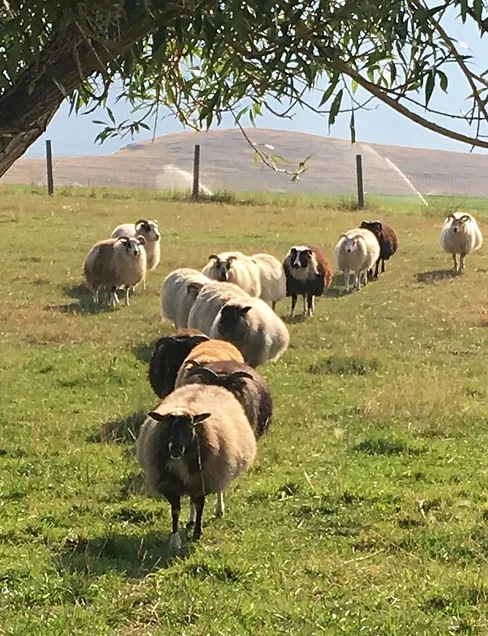
Access to fresh, clean water is essential year-round, but especially in summer. We check and refill our water troughs frequently, sometimes adding an extra tub or two around the pasture when the days get especially hot. On particularly scorching days, we’ll also rinse out the tanks more often to keep the water from becoming warm and stale.
Nutritional Support
In the heat of summer, Icelandic sheep need more than just water—they need support that helps them stay resilient from the inside out. That’s where natural additions like apple cider vinegar, loose minerals, and kelp come in.
We add raw apple cider vinegar to our sheep’s water during the warm months. It’s a small step with noticeable benefits: improved digestion, fly resistance, and overall vitality. Just a splash per gallon can help keep their systems balanced when the heat stresses their metabolism.
Free-choice, loose minerals are another summer essential. Unlike mineral blocks, loose minerals allow sheep to self-regulate their intake more easily. We make sure mineral feeders are clean, dry, and easily accessible in the pasture.
One of the biggest shifts we notice in summer is a sharp increase in kelp consumption. Our sheep instinctively seek it out more when the temperatures rise, likely due to the rich mineral content and its natural iodine, which supports their thyroid and immune system. It’s a reminder that animals often know what they need—our job is to make sure it’s available.
Fly Control
With heat comes flies—and with flies come stress, irritation, and the risk of flystrike. Icelandic sheep have relatively short tails and a naturally clean back end, which helps, but we still stay vigilant. Regular checks, fly traps, and natural fly repellents (like essential oil sprays) go a long way. We also keep bedding areas clean and compost manure regularly to help reduce fly breeding grounds.
Like many animals, our Icelandics slow down during the heat of the day. You’ll often find them lounging in the shade, chewing cud, or even standing still to avoid exertion. Once the sun starts to dip, they perk up—grazing more vigorously.
One interesting observation: they tend to graze more in the early morning and late evening during hot spells, adjusting their schedule naturally in response to the heat.
The Role of Pasture Rotation
Good pasture management helps tremendously in summer. Rotating pastures every few days keeps the grass fresh and reduces parasite loads—which can worsen under warm, moist conditions. It also gives worn-down areas time to recover and helps us better manage flies by moving the sheep away from manure laden ground.
Final Thoughts
Caring for Icelandic sheep in the summer means working with their natural instincts while giving them the support they need in a climate they weren’t originally bred for. With a little planning—ample shade, cool water, fly control, and smart pasture rotation—these hardy sheep adapt surprisingly well. And in the golden light of a summer evening, watching them graze peacefully with the mountains as a backdrop, we’re reminded again of why we fell in love with this breed in the first place.
